Nanoscale Flow Research Division
Molecular Heat Transfer Laboratory

ProfessorTaku Ohara

Associate ProfessorDonatas SURBLYS
-
Analysis of thermal and fluid phenomena based on the molecular dynamics theory leads to understanding of fundamental mechanism of the phenomena, and ultimately, to the design of thermal and fluid phenomena that are needed in the cutting-edge area in modern technologies. Also the molecular-scale analysis is effective for thermofluid phenomena in extreme conditions in which macroscopic models such as thermophysical properties and the concept of interface are no longer valid. In the application field, micro/nanofluidics is now expanding rapidly especially for the field of biotechnology, which is based on the micro/nanoscale thermal and fluid engineering supported by the recent progress of the MEMS/NEMS technologies. Realization of the mechanism of nanoscale thermal and mass transport in living body in biomimetic fluid machines is one of the most promising fields in the area of micro/nanofluidics. The molecular heat transfer laboratory is engaged in the research to analyze micro/nanoscale thermal and fluid phenomena, from the molecular scale to the MEMS/NEMS scale, and pursue the application of it.
Study on Fluid and Soft Matter Structure and Transport Characteristics of Energy and Momentum
Fluids, especially liquids and soft matter, contain various structures of which dynamic characteristics governs transport phenomena in liquids, i.e., transport of mass, momentum and thermal energy. Analysis of their structures and transport characteristics gives a thorough answer for some questions such as why a particular fluid has a certain magnitude of thermophysical properties and how the molecular structure should be to realize a fluid having desired thermophysical properties. Another point of this study is heterogeneous structures such as layer by layer (LbL) membranes. Anisotropic transport phenomena that arise in such heterogeneous structures are analyzed as a basic study for novel materials of nanoscale thermal and mass transport devices.
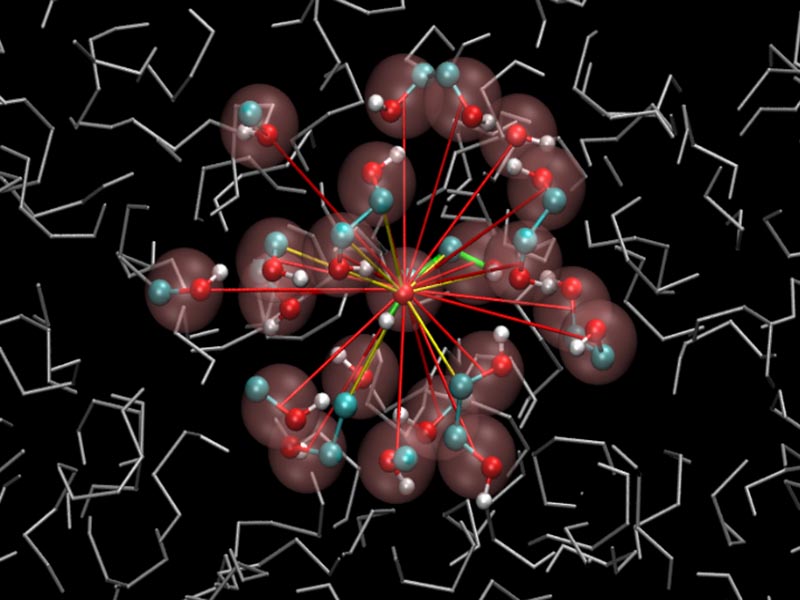 Heat paths in ethylene glycol
Heat paths in ethylene glycol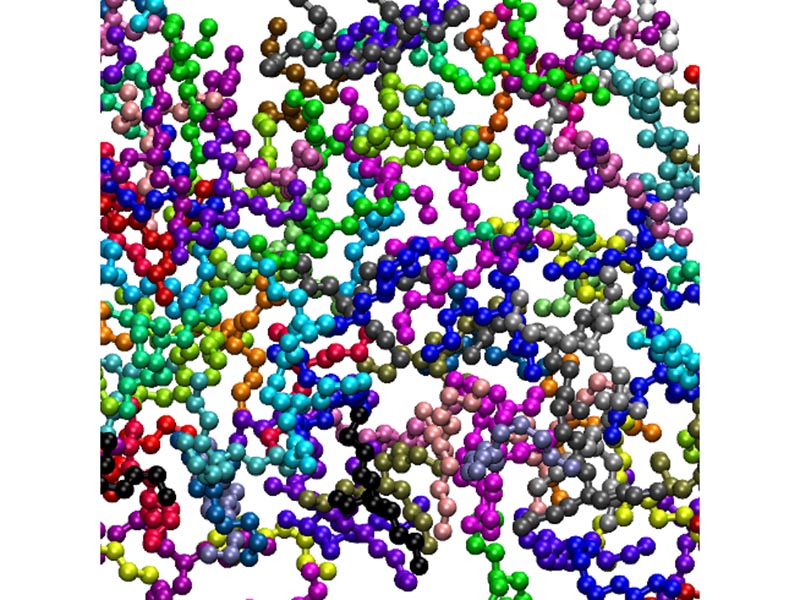 Liquid 5-butyldecane (C14H30)
Liquid 5-butyldecane (C14H30)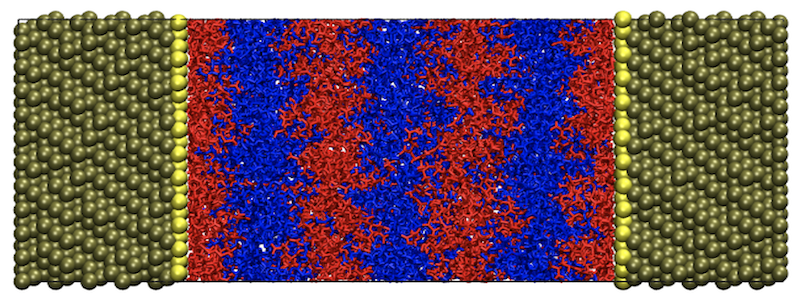 Layer by layer membrane
Layer by layer membrane
Heat and Mass Transfer Characteristics at Solid-Liquid Interfaces
Heat and mass transfer at interfaces, where solid and liquid are in contact, governs overall characteristics of nano-structured systems, such as NEMS and porous materials. This property is utilized in nano-fabrication process such as the wet process for semiconductor devices. Molecular dynamics simulation is used to analyze anomalous structures in liquids in the vicinity of interfaces, appearing due the influences of solid surfaces, and intermolecular energy transfer between solid and liquid molecules, which clarifies mechanism of the transport phenomena. Basic studies to seek molecules and nanostructures which exhibit required interface characteristics are also performed.
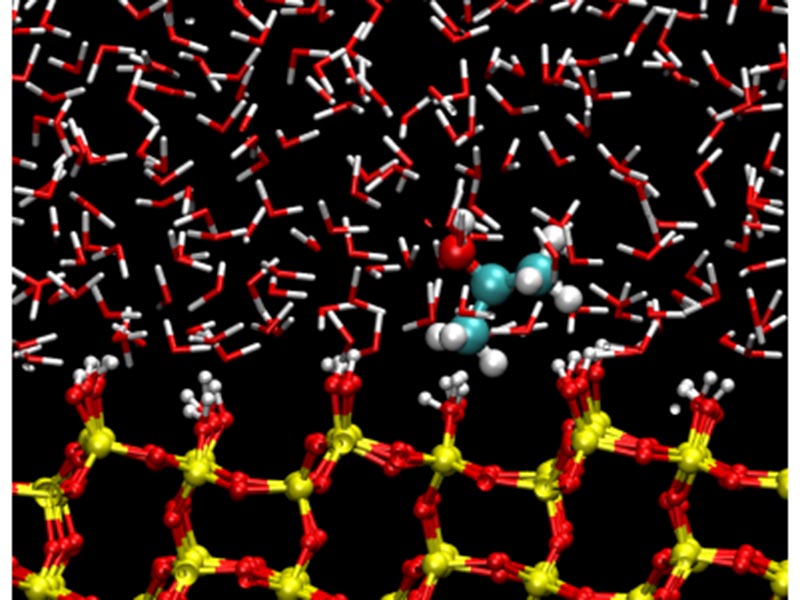 IPA (alcohol) molecule at a SiO2 solid surface
IPA (alcohol) molecule at a SiO2 solid surface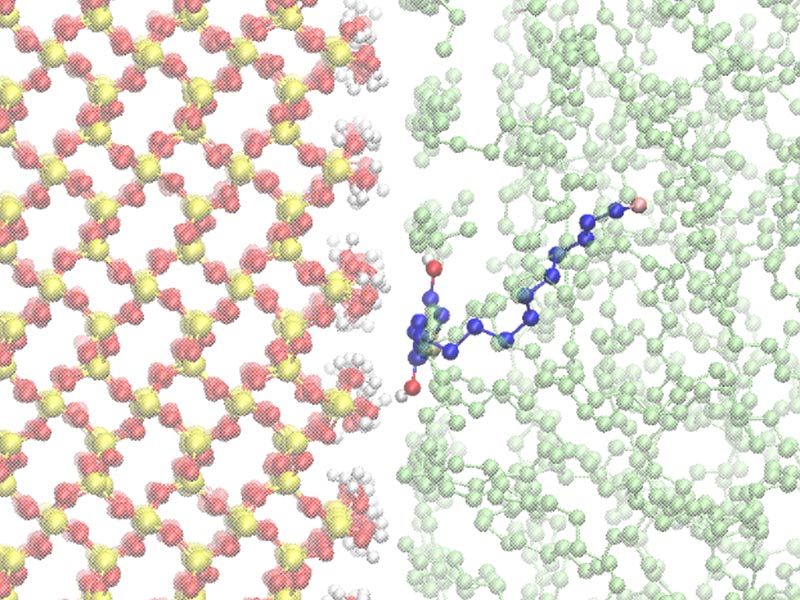 Branched-chain butanediol at a SiO2 solid surface
Branched-chain butanediol at a SiO2 solid surface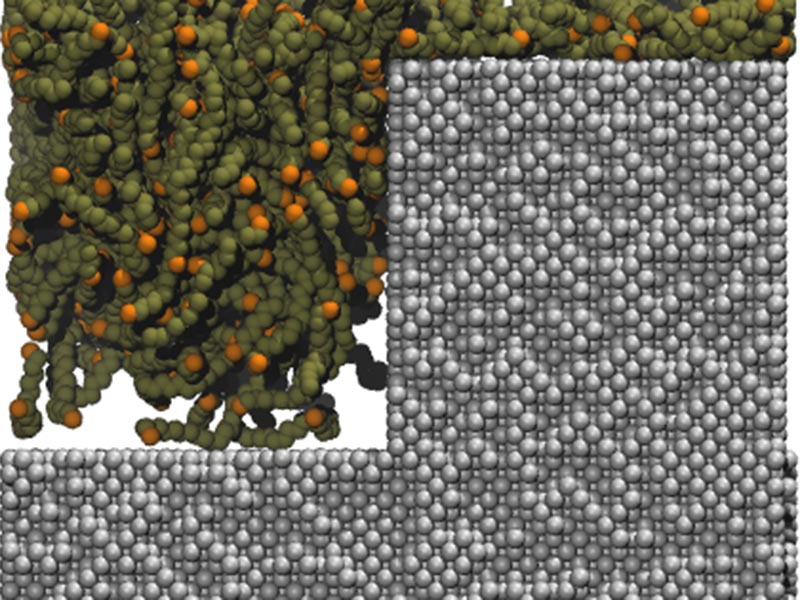 Polymer liquid at a grooved surface
Polymer liquid at a grooved surface
Design of Novel Thermal Fluids Based on the Thermal Energy Transfer Data of Liquid Molecules
Thermal fluids, which flow and transport thermal energy in devices, are playing a major role in highly efficient usage of thermal energy in sophisticated thermal devices. The aim of this study is to know the structure of molecules of thermal fluids which are optimized for specific conditions to give the best performance. This is accomplished based on the data concerning thermal energy transport in fluids, which is obtained by analysis of mechanical energy transfer due to dynamic motions of molecules and functional groups in molecules. Our goal is to establish the design approach of thermal and flow characteristics for fluids, just like for solid materials that is already well established.
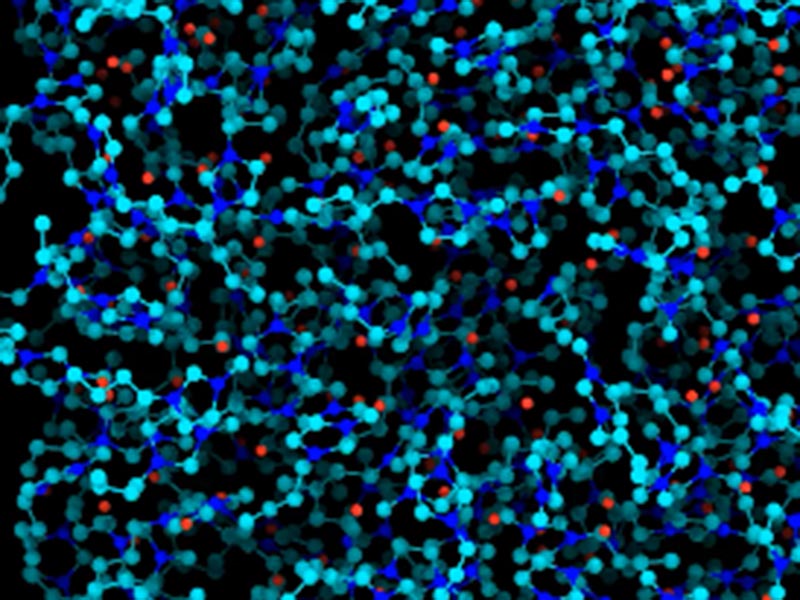 Ionic liquid
Ionic liquid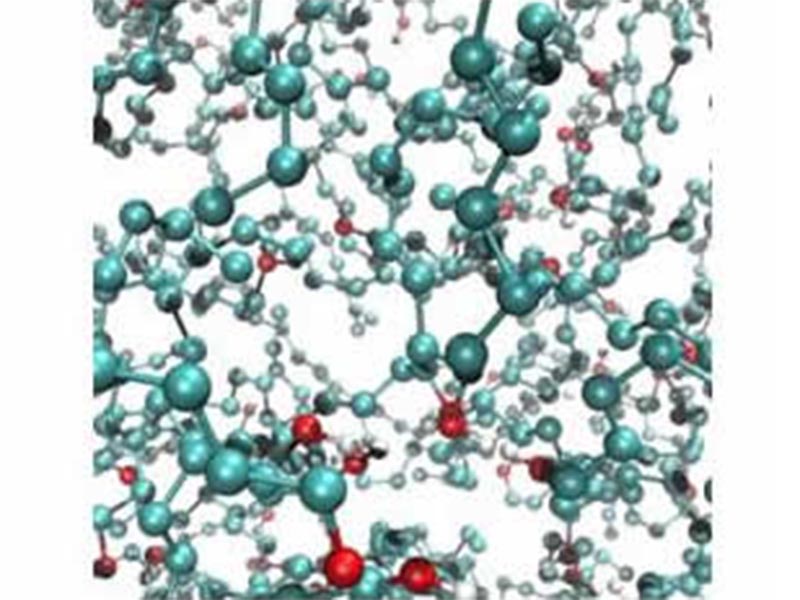 Decanol liquid
Decanol liquid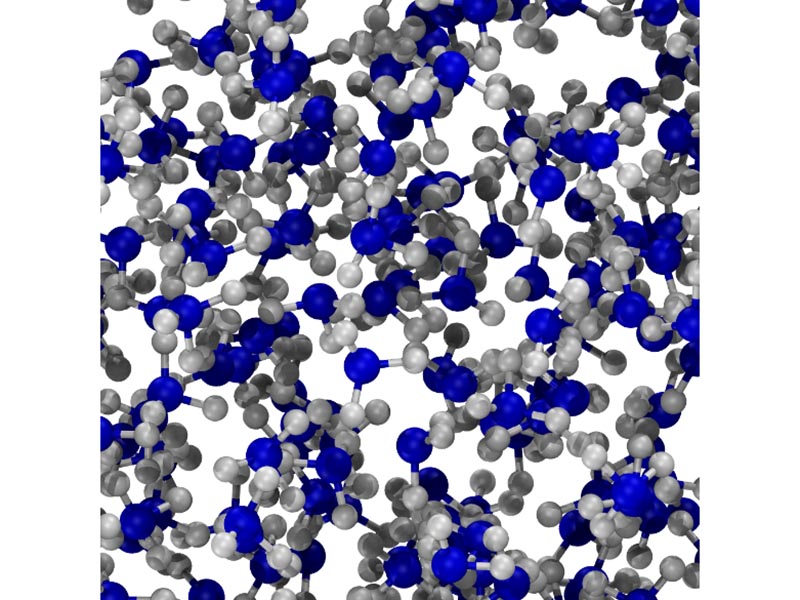 Ammonia liquid
Ammonia liquid
